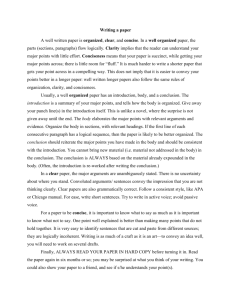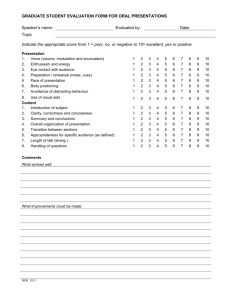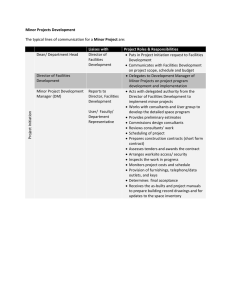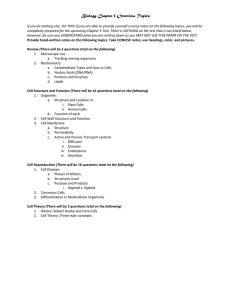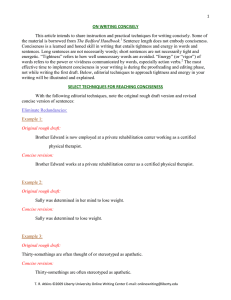Tips for Writing a Policy Analysis The Writing Center
advertisement
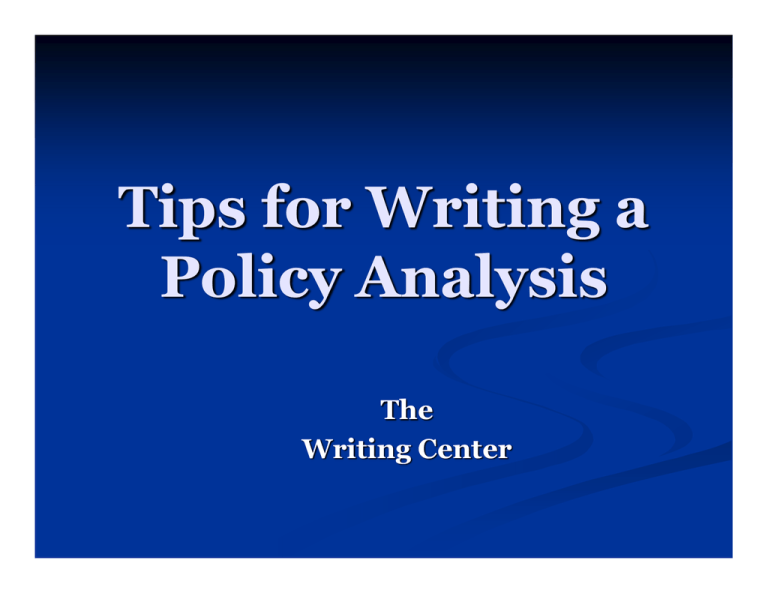
Tips for Writing a Policy Analysis The Writing Center What is Policy Analysis? Policy recommendations, or simply written policy advice, are the key means through which policy decisions are made in most levels of government. Whether the policy recommendation is accepted as sound or dismissed in favor of another option largely depends on how well the issue and the arguments justifying the recommended course of action are presented. POLICY ANALYSIS defines the problem and the goals, examines the arguments, and analyzes implementation of the policy. A step-by-step guide Step 1: Defining the problem Step 2: Establishing goals Step 3: Selecting a policy Step 4: Implementing a policy Step 5: Evaluating the policy Step 1: Defining the problem What is the problem to be addressed? What was the event or series of events that was a catalyst for action? Is it a problem or crisis that demands immediate attention? Is the problem one of national security, economic development, diplomacy? What interests are at stake for the actor (e.g. state) overall? Step 2: Establishing goals How will you translate the aforementioned problem into a specific set of goals? What is the relationship between those goals and the problem that was identified? What government or non-government organizations are involved in making this decision? Which ones are not involved? Are there other interests (e.g. in the region) that should be considered in your analysis? Step 3: Selecting a policy Based on your research and understanding of the situation, select a policy, and consider the following: What other alternatives were considered? Why were the other alternatives rejected? For rational or political reasons? Describe the tradeoffs policy makers must accept based on your selection – what tradeoffs do policy makers see as inherent in the selected policy? Step 4: Implementing a Policy What agency or organization implemented the policy? Was the policy implemented according to original design? Has the agency changed or skewed the policy to reflect its own interests and goals? Which changes were made from the original design and why are they important? In your opinion, could another agency have implemented the policy better? Step 5: Evaluating the Policy Did the policy achieve its goals? Did the policy solve the original problem? Or did the policy solve a different problem that the one originally identified? What were the costs and consequences of the policy? Did the policy achieve its goals at a reasonable cost? Overall, was the policy a “success” or a “failure”? Tips for a well-written policy analysis Make it Readable: No matter how complex the issue, or the recommendation, your ideas must be clear and readable. Read the policy analysis out loud to yourself or have a roommate test its readability. Be accurate: Policy recommendations must be based on the most recent, accurate and complete information available. Visit the American University Bender Library to obtain the most recent publications available and use the internet to your advantage – current affairs peer reviewed publications are released frequently through think tank websites and academic databases. Be Concise: Decision-makers are busy people. Keep your documents as focused and concise as possible so that your readers spend only the minimum time required to glean the information they need from them. Conciseness is really a product of the revising and editing stages –our Writing Center consultants are happy to show you how! Visit the Writing Center We’re here to help! Make an appointment with one of our consultants to discuss your policy analysis – we’ll be your audience as you read it aloud, help you evaluate the credibility of your sources, and teach you how to edit for conciseness. For a free, 45-min. coaching session call 202. 885. 2991 Location: Battelle-Tompkins 228 Special thanks to Dr. Janet Auten and Dr. Sharon Weiner for assisting with the creation of this online tool.
